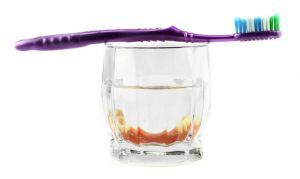 Over time, each of us is faced with the problem of lost teeth. Because of their lack of chewing food is very difficult, besides the smile does not look pretty aesthetic. What to do in this case?
Over time, each of us is faced with the problem of lost teeth. Because of their lack of chewing food is very difficult, besides the smile does not look pretty aesthetic. What to do in this case?
Stomatology does not stand still, so there is a replacement option for lost teeth. In most cases, dentures are a wonderful alternative to real teeth.
However, when installing any prosthesis between such designs and gums, there are always small gaps. Over time, they become overgrown, serve as a place of accumulation of food and bacteria and eventually can cause unpleasant odor, dental problems and inflammatory processes.
The installation of artificial teeth does not mean that the prosthesis does not require care, so you should not neglect the rules of cleaning and hygiene of the oral cavity. Correct and timely care will help avoid many problems and extend the life of the inserted teeth.
Unfortunately, not everyone knows how to properly care for such prostheses.
Tactics for the care of prostheses depends on the type: removable or non-removable implants are installed in the mouth in humans. To maintain your health for a long time, you need proper care for artificial teeth, which in some cases has its own characteristics.
Contents
- Removable or non-removable dentures - what to choose?
- Care of removable structures
- About food seriously
- How and how to clean dentures?
- How to take care of non-removable dentures?
- Possible complications of
- Denture failure - the situation is not frequent, but possible
Removable or non-removable dentures - what to choose?
The main goal of prosthesis installation is to ensure stability while chewing food and forming the right bite. 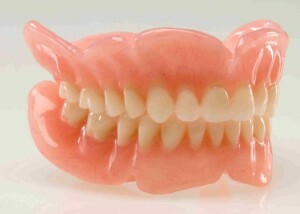
Regardless of whether they are removable or non-removable designs, they all pursue the same goal. A trip to the dentist for its installation boils down to one main question, which of these species is right for you and what is their difference?
Fixed prosthetic structures can be made of different materials and require fixation for a long period of time for one tooth or a whole row.
These can be veneers or tabs that replace only the damaged part. The absence of a single tooth involves the installation of a single crown, but a bridge or an implant is required for a whole row.
Each of their types of prostheses has its own peculiarities in the way of their fixing:
- fastening to a specially prepared whole part of the remaining element;
- with dentogingival supports, where the main load goes to the teeth and gums;
- use of metal locks that attach to the supporting adjacent teeth;
- restores the whole element to adjacent supporting teeth with glue.
For the installation of dentures will require the processing of adjacent teeth, to which they will be fixed.
When full or partial loss of teeth is recommended to use removable structures, which are an unusually convenient and practical option for replacing your own. They can replace one tooth, its element or complete a full row of teeth on the jaw.
A huge number of types and options for placing removable partial prostheses in the oral cavity allows the construction of individual sizes:
- partial removable dentures to replace a single tooth or a whole row, ideally suitable for chewing teeth;
- plate-type removable structures are designed for the reconstruction of damaged tooth areas;
- removable fragments as one-sided prostheses;
- conditionally removable recommended for loss of one tooth;
- clasp dentures are the most reliable construction, therefore they are used in any variations.
There are variants of designs, where the main load falls on the entire gingival surface.
Thus, the most important difference between removable and non-removable prostheses is the time of their fixation.
Thus, removable can be removed independently by their owner, while non-removable structures are designed for long-term use without the possibility of independent extraction.
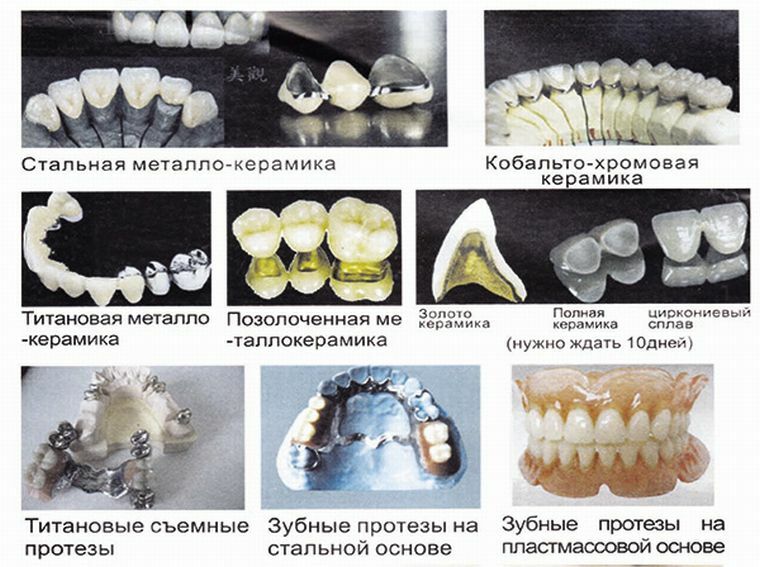
Care of detachable
structures Since the normal functioning of prostheses depends on compliance with hygiene rules and the effectiveness of such measures, the care of removable dentures requires:
- to be properly worn and operated;
- proper care not only for the prosthesis, but also for the oral cavity;
- use of special care products;
- daily and thorough cleaning of contaminants;
- special storage in case of using removable structures.
The use of prostheses at first can cause discomfort or bring unpleasant sensations.
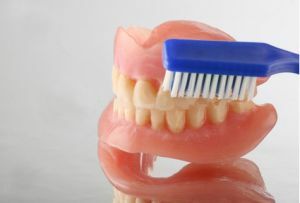 For reliable fixation of the prosthesis, special powders, glue, strips and creams are used. However, in the case of increased salivation, fixing agents are rather difficult to use.
For reliable fixation of the prosthesis, special powders, glue, strips and creams are used. However, in the case of increased salivation, fixing agents are rather difficult to use.
Since permanent wearing of removable dentures is harmful, they are recommended to be removed periodically. In this connection there is a problem of correct storage.
To maintain the shape of the prosthesis it is necessary to maintain its moist environment, i.e.put in water at a time when it is not used for its intended purpose. In this case, a glass with water, a special container with disinfectant solutions, can be used.
If the prosthesis has not been used for a long time, professional bleaching is recommended.
During the period of habituation, very often there are problems with diction, so to talk faster and get used to a denture, talk more and read aloud.
You can use the fixation strips that have a softening effect on the gums and help the person get used to wearing the structure.
About food seriously
The process of eating food should be slow and in small portions. It is advisable in the process of habituation to focus on shredded and soft foods, as well as avoiding excessive loads on the jaw. Provoke a breakdown of the prosthetic structure can not only solid, but also viscous and sticky products.
After each meal, it is necessary to wash the removable teeth under the running water to maintain the health of the gums and remove the food particles that may remain after eating.
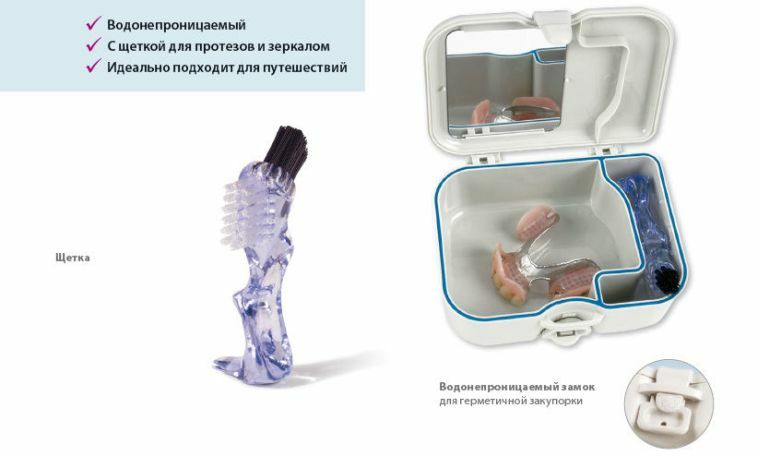
Dental prosthesis storage container
How and how to clean dentures?
For cleaning the prosthesis itself, use a soft brush, brush and toothpaste without abrasives. 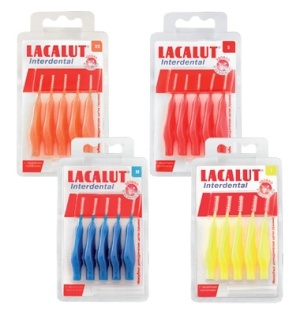
If you can not pick a paste without abrasives, then baby toothpaste can be considered as an option.
Cleaning of such a structure is additionally carried out using tablets and solutions that disinfect well and clean the surface of the prosthesis of contaminants.
After finishing the cleaning of the prosthesis, you need to clean the remaining teeth and rinse the mouth. Even if you do not have a single tooth left, you can use a cotton swab or a swab to treat the oral cavity.
How to take care of non-removable dentures?
In principle, the process of care for non-removable dentures is no different from caring for removable structures, but there are a number of features. Let's pay attention to them.
Since non-removable dentures are an integral part of the jaw and are constantly in the oral cavity, access to some of their areas is limited. Therefore, caring for such models involves brushing your teeth with a special brush-brush and paste, which does not contain abrasives.
Special attention must be given to the inner surface and the spaces between the teeth. To maximize the effect of cleaning the movement of the brush should be performed sweeping movements from the gum to the top of the tooth.
These designs provide for periodic cleaning by the irrigator, which, under the pressure of the jet, relieves the mouth and teeth from the 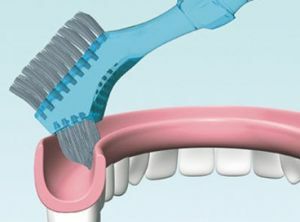 food residues and prevents the appearance of caries in these areas. In addition, the massage effect of the water jet when interacting with the gums stimulates blood circulation.
food residues and prevents the appearance of caries in these areas. In addition, the massage effect of the water jet when interacting with the gums stimulates blood circulation.
It is mandatory to brush your teeth 2 times a day, but it is desirable after each meal, paying special attention to the place of contact of the prosthesis with the gums. It is here that the bulk of the plaque accumulates.
For preventive cleaning at home, you need to use additional cleaning agents that are suitable for removable structures.
Regular rinsing with special disinfectant solutions and regular professional cleaning once every six months will significantly increase the life of your new teeth.
Possible complications of
Since the prosthesis is a foreign object, its operation implies the following problems:
- rejection, excessive salivation or gag reflex at the stage of adaptation of the jaw to the prosthesis;
- mismatch design contours of the jaw, resulting in the prosthesis can cause injury to soft tissues of the mouth;
- the presence of atrophy of the jaw, when the free place of the tooth is occupied by its neighbors, which distorts the proportions of the face.
To avoid these and any other problems, consult a doctor for help.
Denture failure - the situation is not frequent, but possible
The prosthesis, like any other thing, has the property of abrasion and breakage. In most cases, the main causes of the failure are: 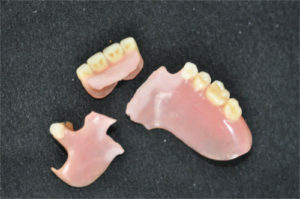
- careless handling and incorrect load distribution;
- improper maintenance of the prosthesis;
- loose construction also shortens the life of the product;
- presence of manufacturing defects.
These reasons are prerequisites for breakage, spalling, detachment or detachment of any part from the prosthesis.
The patient observes discomfort when wearing it. This is the first signal to visit a doctor who will be able to repair a denture. The use of special equipment, tools and the availability of special knowledge and skills will help the doctor quickly repair the damaged structure.
The problem of lost teeth makes us think about the possibility of installing removable dentures, which can be used both for partial replacement of the tooth and complete loss of a number of teeth.
Depending on the situation, the dentist can recommend removable or non-removable structures. To ensure that such products as long as possible, you need a proper care and careful attitude towards them.
